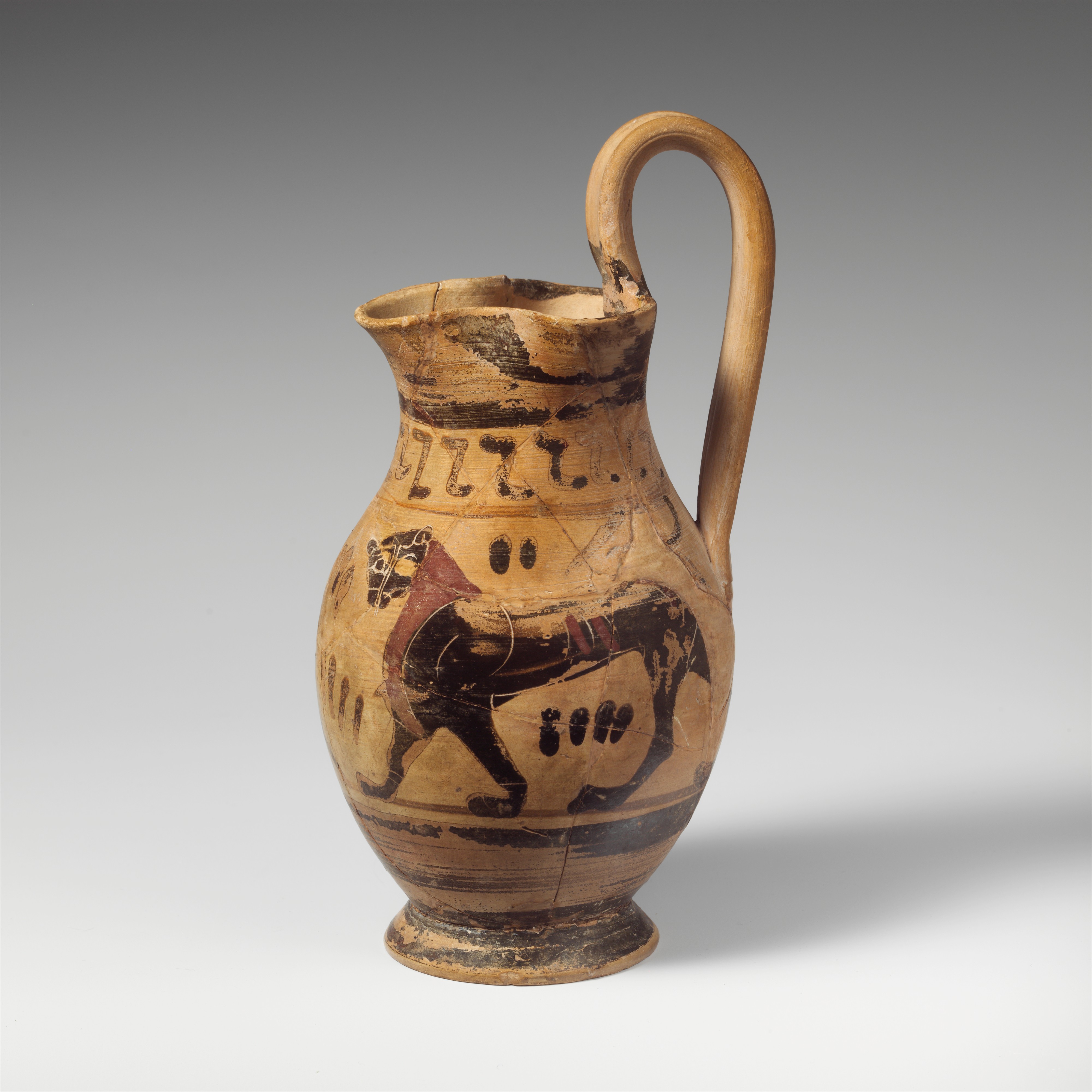-
 Attic Black Glaze Saltcellar Fragments
Attic Black Glaze Saltcellar FragmentsM10 Cat. Att 583
Pottery
Ceramic
()
Two rim fragments from a pair; not from the same pot.
-
 Attic Black Glaze Saltcellar Fragments
Attic Black Glaze Saltcellar FragmentsM10 Cat. Att 584
Pottery
Ceramic
()
Two rim fragments from a pair; not from the same pot.
-
 Attic Black Glaze Miniature Kothon Fragment
Attic Black Glaze Miniature Kothon FragmentM10 Cat. Att 585
Pottery
Ceramic
600-550 BC (Lydian)
Fragment of body. Reserved except for a wide band on the lower part of the body, and dots between thick lines on the upper part of the body. Possibly one of the earliest pieces of Attic black glaze to arrive at Sardis.
-
 Attic Black Glaze Kothon
Attic Black Glaze KothonM10 Cat. Att 586
Pottery
Ceramic
Ca. 500 BC (Late Lydian (Persian))
Fragment of foot and body. Molded ring foot, rounded on the inner side. Sharp angle between the lower and upper walls. Reserved: lower torus of foot and resting surface. Miltos on flat recessed bottom and upper torus of the foot. Fine black glaze ins...
-
 Attic Early Geometric One-Handled Cup
Attic Early Geometric One-Handled CupM10 Cat. Att App. 1
Pottery
Ceramic
()
Restored from fragments. Several pieces of the body and most of the surface of the handle are missing. Black glaze overall, except the following reserve areas: a band below the rim on the exterior, the bottom of the wall (ca. 0.01), and the entire un...
-
 Attic Middle Geometric Skyphos
Attic Middle Geometric SkyphosM10 Cat. Att App. 2
Pottery
Ceramic
Ca. 800-750 BC ()
Middle Geometric II. Handles missing. Three horizontal bands on the lip. Handle zone reserved: nine vertical lines on each side within the reserved panel; three horizontal bands on the bottom, and in the center, twelve chevrons to right, and a dot on...
-
 Attic Black Figure Oinochoe
Attic Black Figure OinochoeM10 Cat. Att App. 3
Pottery
Ceramic
Ca. 500-480 BC (Late Lydian (Persian))
Chase, "Field Notes": "On neck, simple maeander, bordered above and below by a single line; on shoulder, ... tongue pattern bordered above and below by a single line, and defining top of main field; at either side of main field, three vertical lines ...
-
 Attic Black Figure Oinochoe Fragments
Attic Black Figure Oinochoe FragmentsM10 Cat. Att App. 4
Pottery
Ceramic
()
Two fragments. Only a small bit of the painted design is preserved: vertical black bands with dots between them, from the border of a reserved panel on the body of a trefoil oinochoe.
-
 Attic Black Figure Olpe
Attic Black Figure OlpeM10 Cat. Att App. 5
Pottery
Ceramic
Ca. 560-540 BC (Lydian)
Restored from many fragments; complete except for small pieces of the rim and body. Two panthers, walking on a ground line are confronted at either side of a stylized lotus flower. Their heads face front. The tail of each curls up and "disappears" be...
-
 Attic Black Figure Lekythos
Attic Black Figure LekythosM10 Cat. Att App. 6
Pottery
Ceramic
Ca. 530 BC (Late Lydian (Persian))
Mended from many fragments; parts of upper body, shoulder, lower neck missing and restored in plaster. Quadriga to right and three figures. A bearded charioteer in a long tunic mounts a chariot and holds the reins. Facing him is a standing warrior ho...
-
 Attic Black Figure Lekythos
Attic Black Figure LekythosM10 Cat. Att App. 7
Pottery
Ceramic
()
Complete and unbroken. Black glaze on the foot, lower body, handle, and rim. Chase, "Field Notes": " On shoulder, double row of tongues. On body, fine hard yellowish white slip, bordered above and below by a narrow brown-black stripe and decorated wi...
-
 Attic Black Figure Lekythos
Attic Black Figure LekythosM10 Cat. Att App. 8
Pottery
Ceramic
()
Local imitation of Attic black figure. Chase, "Field Notes": "Buff clay, light buff slip; body, foot, and handle covered with poor black varnish. At top of body, two stripes in red overcolor, about middle of body, one stripe. On shoulder, two bands o...